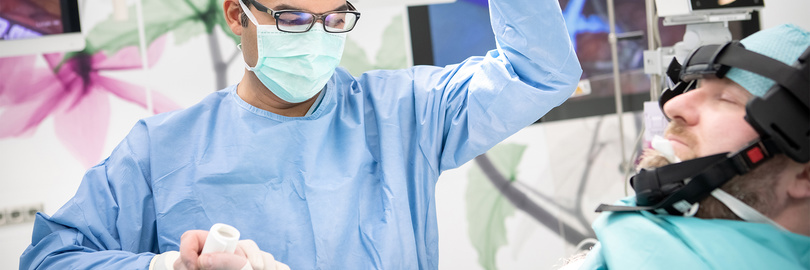Safety in the OR in times of transition - how can the challenge be mastered?
Safety in the operating room (OR) depends on a multitude of factors: from room size and layout to increasingly sophisticated medical technology, and from hygiene and logistics to human factors. At the same time, traditional surgery is undergoing significant change – highly complex operating rooms are gaining increasing relevance. These fundamental transformations in the OR landscape, and consequently in working conditions, require appropriate adjustments to ensure both patient safety and the protection of OR staff. After all, the OR is not a typical workplace: those working in the operating room must maintain a high level of attention and concentration at all times, and are often exposed to increasing workloads due to cost pressures. In parallel, the shortage of skilled professionals is leading to growing staff shortages. Taken together, these factors often result in high levels of stress and psychological strain among staff. The combination of complex tasks, increasing workload, and high responsibility could lead to severe overload and a risk of staff burnout and absenteeism.
Additionally, from an ergonomic perspective, OR nurses often work under unfavorable conditions – mostly standing and frequently in what are referred to as "forced postures." Handling heavy loads such as instrument trays or medical devices, as well as the physical strain of patient positioning, places further burden on the musculoskeletal system. As a result, musculoskeletal disorders are significantly more common among OR personnel. Common workplace hazards in the OR include tripping, slipping, and falling, as well as injuries from bumping into equipment or getting pinched or crushed. Cuts and needlestick injuries, which carry a risk of infection, are also frequent. Improvements in workplace design and ergonomics can provide considerable relief.
Properly organizing and equipping the OR – For the benefit of staff and patients
A well-designed storage and organization system, located close to the point of use, can help keep transport distances short and reduce the physical strain on staff from lifting and carrying. Moreover, comprehensive and integrated solutions are needed to meet the demands of both current and future workflows while providing optimal support to the surgical team. With the rise of minimally invasive procedures, the requirements for OR equipment are also evolving – including the OR table as a central element. Today’s surgical tables must meet technical standards for radiolucency, stability, and hygiene, while also offering flexible positioning options to suit various clinical needs. From an ergonomic perspective, surgical tables should also be adapted to the working conditions of the staff to support a healthier working environment and enhance occupational safety. For instance, tables such as the Maquet Magnus, which allow for patient transfers without repositioning, can help shorten turnover times and reduce strain on nursing staff.
Optimal patient positioning and improved workplace ergonomics
A crucial factor in patient safety is proper positioning – not only during surgery but also before and after the procedure. Optimal patient positioning on the surgical table is essential to provide surgeons with the best possible access and visibility to the surgical field, while also protecting patients from position-related injuries. This helps prevent long-term complications such as nerve damage or pressure ulcers, which can delay healing and rehabilitation. Patients should always be positioned in a way that maximizes access to the surgical site while minimizing the risk of complications. This requires appropriate cushioning, pressure distribution, and pressure relief on a surgical table that can be precisely adjusted to the clinical positioning needs. In high-frequency surgery, additional positioning protocols must be followed to ensure that patients are isolated and do not come into contact with conductive materials.
Modern surgical table systems characterized by high flexibility, modularity, and compatibility – such as the hybrid-OR-compatible Maquet Magnus or the adaptive Maquet Otesus by Getinge – offer significant advantages. These systems can meet the specific requirements of various surgical disciplines in terms of patient positioning, optimal access to the surgical field, and workplace ergonomics, all while contributing to safety in the OR. Their contribution is even more significant when they include features such as automatic collision detection and integrated tilt protection, as seen in systems like Maquet Corin.
